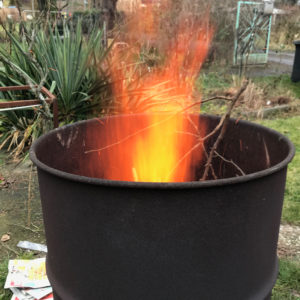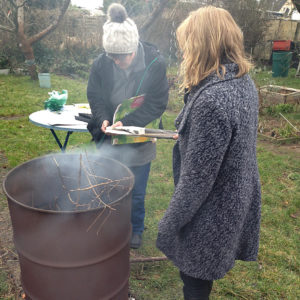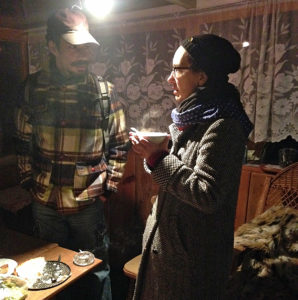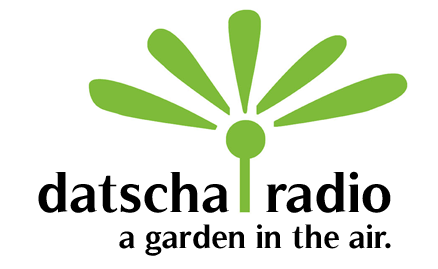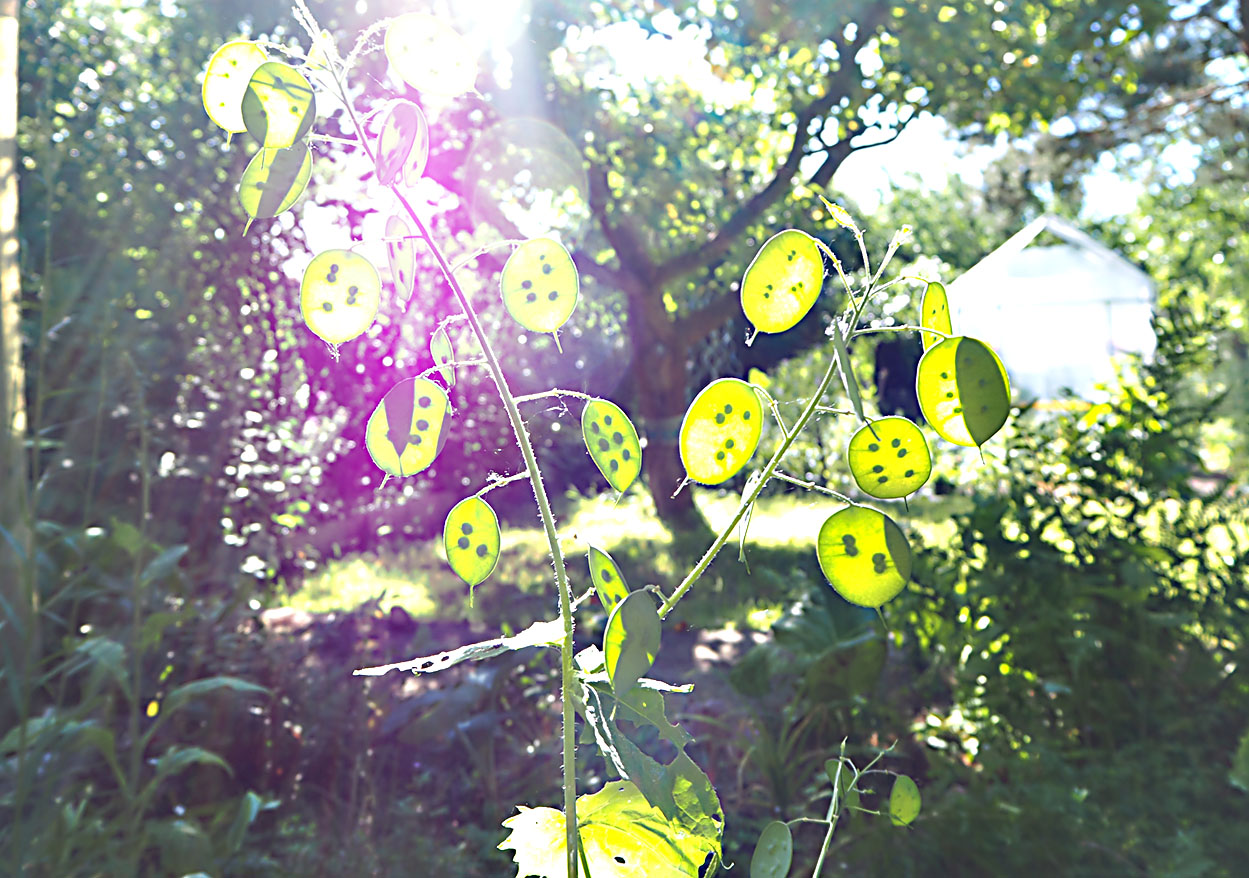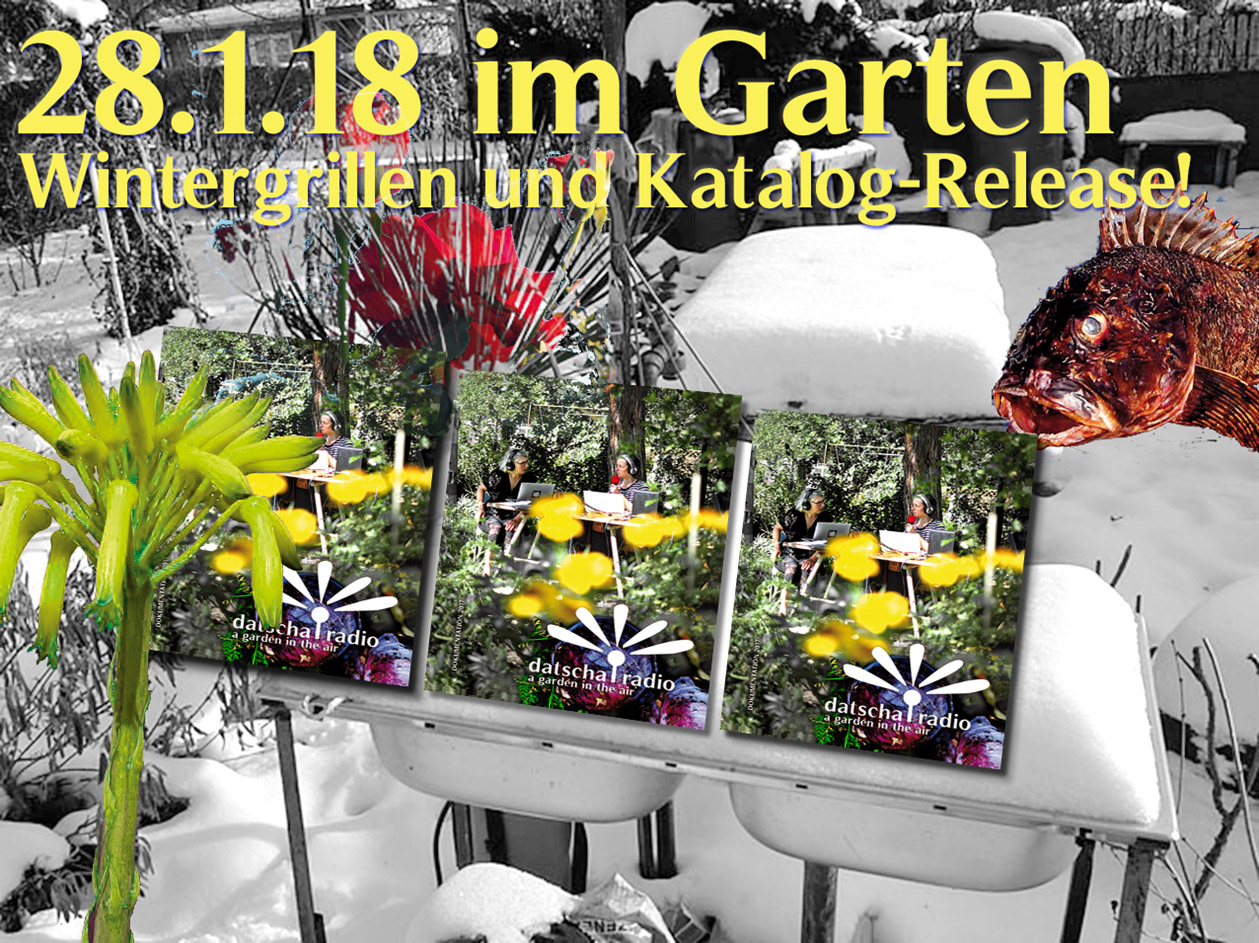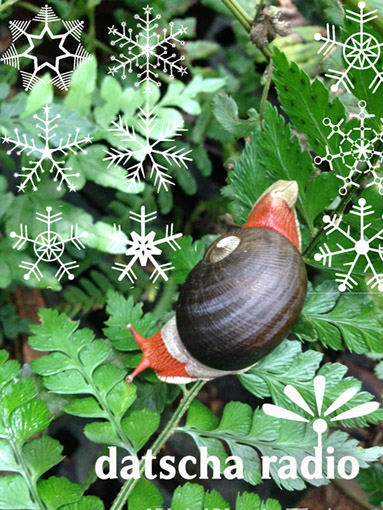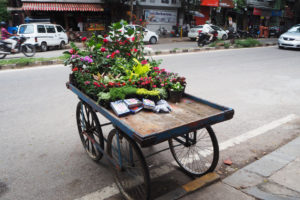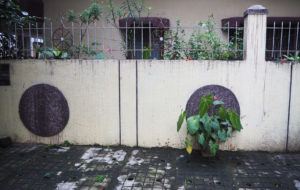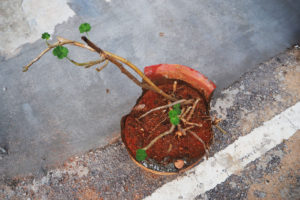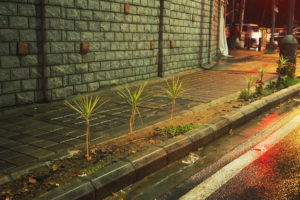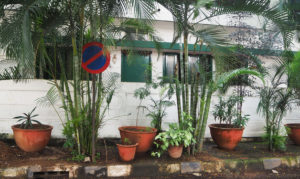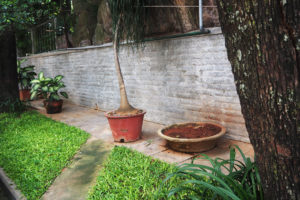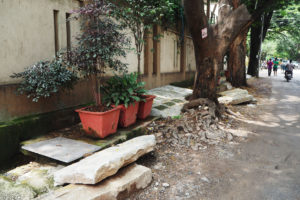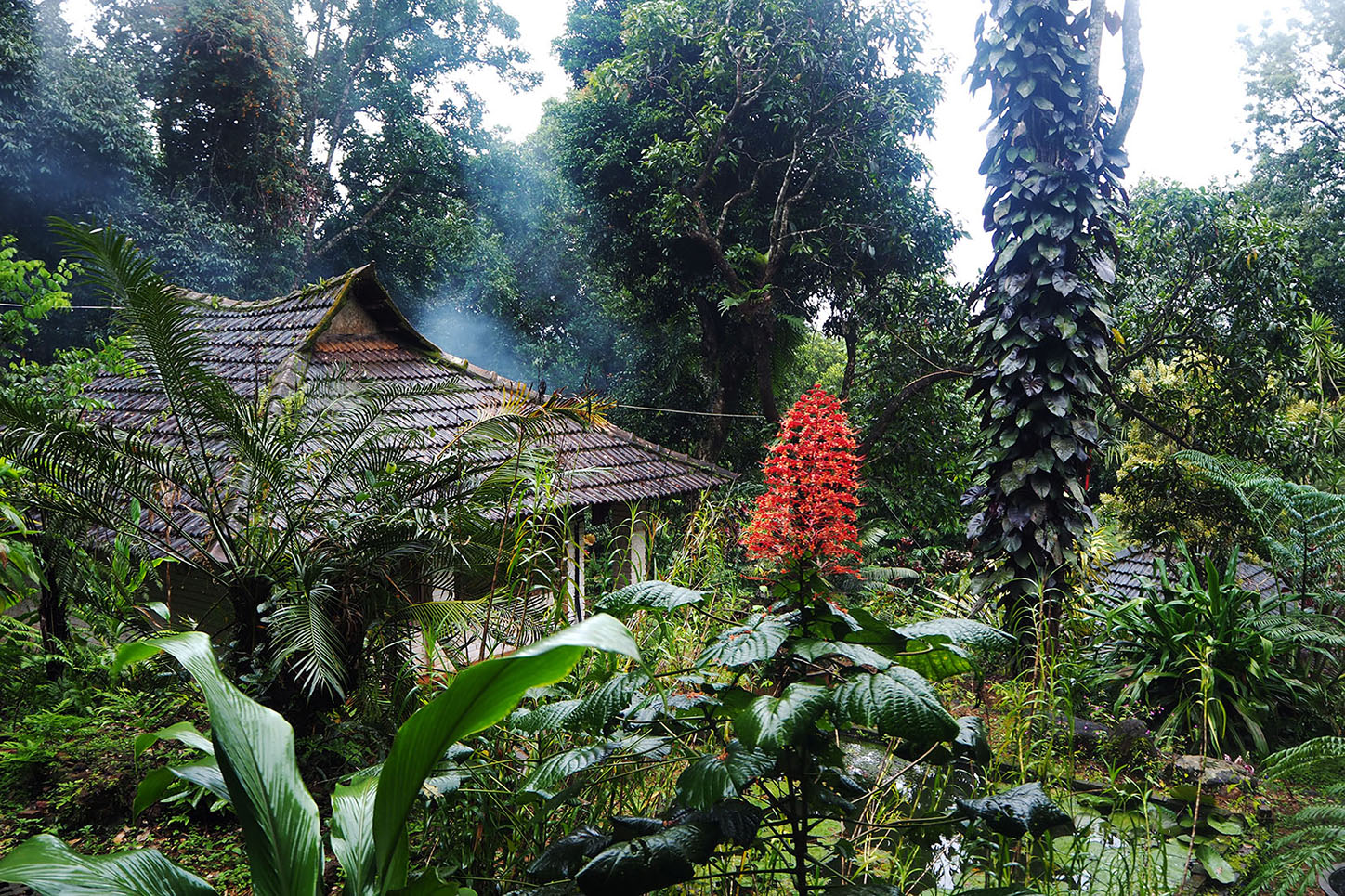
18:30 Uhr: Die Stunde, in der sich das Grün der Pflanzen und das Rot der Erde zu einem weichen, stumpfen Grau in der regenfeuchten Luft verweben. Aus den Schatten breiten sich tiefere Schatten aus und knapp 10 Minuten später steht die Landschaft nurmehr als hingetuschter Schattenriss vorm Auge.
Das Gurukula Botanic Santuary (GBS) liegt eine Stunde Fahrt mit dem Jeep vom Dörfchen Manantavady entfernt und zwei Stunden von dem Dorfstädchen Palmatta, wo mich der Busfahrer auf dem Hinweg im Stockdunklem 4 Uhr morgens abgesetzt hatte. Das Gebiet gehört den Ghat Mountains der Provinz Kerala, 350 km südwestlich von Bangalore. Gurukula bedeutet die „Familie der Lehrer“ – abgeleitet von dem Wort „Guru“ für Lehrer. Der Gründer des GBS, Wolfgang Theuerkauf, allerdings sah die Natur an sich als Lehrerin an… und so meint Gurukula hier “die Familie Natur”.
Hier einige Ansichten des wundersamen Ortes:
Wolfgang Theuerkauf war kein ausgebildeter Gärtner oder gar Biologe als er sich Anfang der 70 (von Berlin kommend!) als knapp 23-jähriger sich auf ein Stück Land in den Bergen Keralas zurückzog um dort seine Arbeit als Bewahrer der Flora des Regenwalds zu beginnen. Als einer der Ersten war er von der Wichtigkeit der „kleinen Pflanzen“ und der ihnen verbundenen Mikroklimata überzeugt. Während in den benachbarten Gebieten abgeholzt wurde, erntete er aus Astgabeln- und Löchern, von Stämmen und Stümpfen zahllose Exemplare denen er in seinem „Sanktuarium“ liebevoll ein neue Heimat gab.
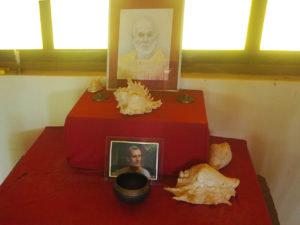
Theuerkauf starb im November 2014 und bis heute ist in den deutschen Medien sehr sehr wenig über ihn und die 40 Jahre seines Lebens zu lesen, die er der Rettung bedrohter Pflanzen widmete. Das ist verblüffend, aber nicht vollkommen überraschend. Bis heute agiert das GBS in Sachen Medien zurückhaltend; einem Team des National Geographic wurde sogar untersagt, die Organisation namentlich zu erwähnen. Es sei „nicht die Art von Publicity, die sie wollten“, bemerkt die leitende Direktorin Subrabha Seshan kritisch.
Zentrum des botanischen Paradieses ist ein Gebäudekomplex, der sich auf verschlungenen Wegen über kleine Terrassen in wundersam vollendeter zärtlicher Balance zwischen Wildnis und Kultur hinstreckt: Das Hauptgebäude birgt einen gusseisernem Herd groß wie ein Hexenhaus an der Stirnseite der Halle und wurde – wie die meisten anderen Häuser auch – von Wolfgang Theuerkauf in Zusammenarbeit mit einem Schweizer Architekten gebaut. Stufen und Wege tiefer kommen schlichte Schlafräume, ein Badehaus mit Balsaminen geschmückten Dach, Toilettenhäuschen (Steinboden!), und immer wieder durchschossen von den Topologien gärtnerischer Tätigkeit: Gelbschwarz gestreifte Wasserschläuche winden sich wie träge Schlangen über Wege, Plätze und die in Stein gehauenen Stufen entlang überdachter Beete und Stellplätze für Töpfe. Jede Terrasse hat ihren Wasseranschluss stehen in handgemauerten steinernen Becken mit Abfluss, die sowohl der Trinkwasserversorgung dienen als auch dem Abspülen schlammiger Sandalen.
Galerie Workspaces:
Ich bin vom ersten Augenblick an berührt und beeindruckt von der unübersehbaren Sorgfalt und Liebe, die dem Regenwaldgarten von GBS sein Gefüge und seine Aura verleihen. Jede einzelne Pflanze ist sichtbar an ihren Ort gesetzt und mit passenden Gefährten umgeben. Jeder Baumfarn, jede Orchidee ist mit Schnüren gesichert an ihren Baum gewöhnt worden, bis sie dort eigenständigen Halt fand. An jeder Ecke finden sich architektonische Konstrukte aus porösen und moos- oder farnbewachsenen Ziegelsteinen, die prächtigen Nestfarnen oder außerordentlich behäbigen Bromelien Wurzelhalt geben. Unter Dächern aus hellem Wellplastik stehen ungezählte Töpfe mit Ablegern verschiedener Pflanzenfamilien: Anthurien (Flamingopflanzen), Arums, Bromelien und eine Unzahl an Impatiens wächst unter und zwischen Bäumen, Baumfarnen und Beeten.
Unvermeidlich: Die Galerie der Blumen!
Kompost wird von den GärtnerInnen selbst hergestellt, ebenso wird auch altes Plastik recycled und als Untersatz für Töpfe genutzt. Wegen des Regens umhüllt von Plastikplanen in abenteuerlichsten Farbkombinationen und in Gummistiefeln wegen der Erdegel arbeiten die GärtnerInnen von morgens 8 bis ca. 17 Uhr abends. Viele kommen aus den umliegenden Dörfern, alle haben einen gärtnerischen Hintergrund und bringen lokales Wissen um Planzkultur und und Botanik mit. Sie lächeln wenn ich vorüber gehe, mit meiner Kamera und meinem Rekorder, sie sind nicht weniger schüchtern als ich, auch wenn einige durchaus Englisch sprechen.
Angeschlagen von meiner Klimaschockerkältung lehne ich lange Stunden auf den Stuhl auf meiner Veranda und bewundere ihre Unverdrossenheit und die erfinderische Praxis, mit der eintache Planen mit neonfarbenen Pluderhosen und geblümten Kurtis in Kombinationen gebracht werden können, die jeden Modemacher auf den Champs Elysees vor Neid erblassen lassen würden.

Mit Hereinbruch der Dunkelheit beginnen die Baumfrösche mit ihren sonderbaren Lauten: Es klingt hell, hohl und hölzern. Ein bisschen so wie diese Klanghölzer, die man eher Unbegabten im Musikunterricht in der vierten Klasse zum Mitklappern gegeben hat. Im Teich hinter dem Haus öffnet eine Seerose ihren Kelch. Das Interview, das ich mit Subrabha Seshan, gestern, am 16. September 2017 geführt habe, steckt in meinem Rekorder… und kommt demnächst auch auf den Blog. Bis dahin: Sternenstille.
Read More

